Part Three in a series of articles about the Slade School Artist by guest writer, Neil Plotkin.

Euan Uglow, Curled nude on a stool 1982-3 Oil on canvas 30 x 39 in
“Most people who have the opportunity to look for hours at one painting by Uglow find their eyes traveling over the surface, perplexed that marks, shadows and forms so limpid could crystalize conflicted emotions. The painter John McLean wrote, ‘These planes of Uglow stand for colour changes perceived with a keenness on might have said bordered on the hallucinatory, there it not reality that was in focus … His observation is so exquisite each discrete plane, each color rings out, like a note in a finely delivered song. The planes coalesce just like such sounds… This surface of a Uglow painting is beautiful. The frankness with which it reveals its constructions resonates as you read the continuum of form and space’.”
From Catherine Lampert Uglow in his earthly observatory. pixxi
Euan Uglow: The Complete Paintings, Catalogue raisonne by Catherine Lampert
Probably the best-known student of William Coldstream, Euan Uglow stands out as one of the most important figurative painters of the late 20th century. Arguably it is Uglow and Freud who dominated the late 20th century figurative painting and influenced countless artists. Perhaps it’s due to Uglow’s private nature or that he was more interested in painting than promoting his work, but Uglow does not get the attention that his work deserves. And to add to this, it is very difficult to see originals of his work in the US (though there are some in private collections). For that reason, I was very interested in going to Browse and Darby (the gallery that represented Euan Uglow for most of his career. Please see note below) while in London. Though I didn’t get to see a full-blown Uglow show, I was able to learn a great deal more about him and was exposed to large number of other great artists who were influenced or taught by him.
Many readers of Painting Perceptions are probably familiar with Euan Uglow and his work and for that reason, I’m going to try and focus on things that I imagine will be interesting to other artists. Also because some of the readers of this article knew Euan Uglow as his gallerist, student, and or model, I want to make clear that this article is my personal interpretation of what I’ve read and found and is not intended to be any sort of historical record. I have done my best to be accurate with the information and if anyone feels that there are any omissions, inaccuracies or would like to add anything to this please contact either Larry Groff (larry@larrygroff.com) or myself at (neil@neilplotkin.com).
Measuring, Marking and Set Up
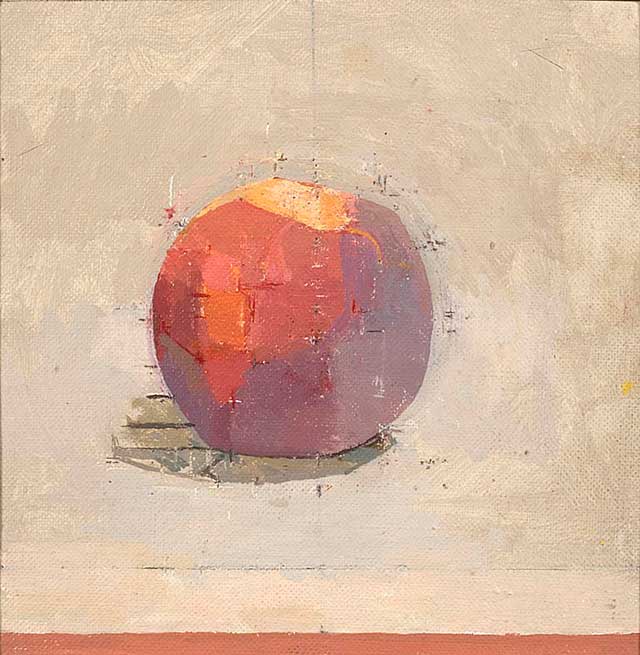
Peach I Young 1999 Oil on canvas laid on panel 6 x 6 inch
(click for larger view – true for many images in this article)
“The majority of Uglow’s rare statements on his art have been extracted from interviews. With their aid, one can visualize the artist sitting in front of the organic subject, light reflected off the back wall, the wires and a plumb line defining the plane that demarcates their separate territory. ‘I take measurements so that the subject has a real link to the rectangle; it also gives me freedom to make a whole surface… I’m painting an idea not an ideal. Basically I’m trying to paint a structured painting full of controlled, and therefore potent, emotion. His attitude to mark-making and surface owed to the Old Masters but also much to Mondrian and William Coldstream, as well as to American abstract painter, particular Rothko and Newman.: ‘I don’t do wristy paintings because I want the brain to intervene between the observation and the mark;’ ‘Sometimes I like a painting to be like [the keys off] a typewriter going across the whole surface. A close friend, Georgia Georgallas, recalled a familiar expression; ‘The words he always used to say: “it’s got to have magic”. And the only way he could think of creating this “magic” was to be true to himself. He was ruthless with himself.’”
From Catherine Lampert Uglow in his earthly observatory. piiii — Euan Uglow The Complete Paintings
The measuring marks over the surface of Uglow’s paintings are a distinctive feature of his work. The marks are a vestige of his mentor William Coldstream. Like his mentor, Uglow also nearly always worked from direct observation and used a similar method of measuring to Coldstream. Uglow would put done marks on the painting (and sometimes on the models) to help measure between different points. Whereas Coldstream felt like it was untidy when he left the marks (he likened it to having his shirt untucked), Uglow claimed he didn’t remove the marks because he didn’t know when he might need to refer to them again.
In order to anchor the elements of his paintings, plum lines were employed. These can be seen in some of the photos of his studio. In those photos we also see the elaborate markings created to position the models. The markings of other set ups and working lines also seem to make their way into other paintings. With all these model position lines, plum lines, dots to measure elements, the final paintings are alive with markings.
Set up for Jana

Finished painting Jana 1996-7 Oil on canvas laid on board 14 x 16.75 in
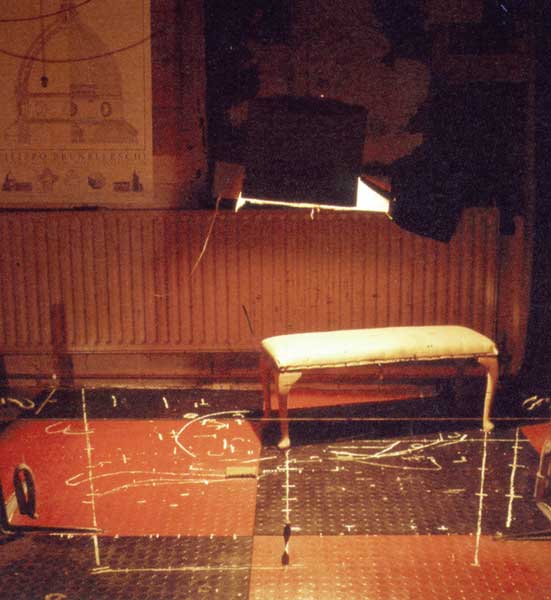
Set up for Nuria
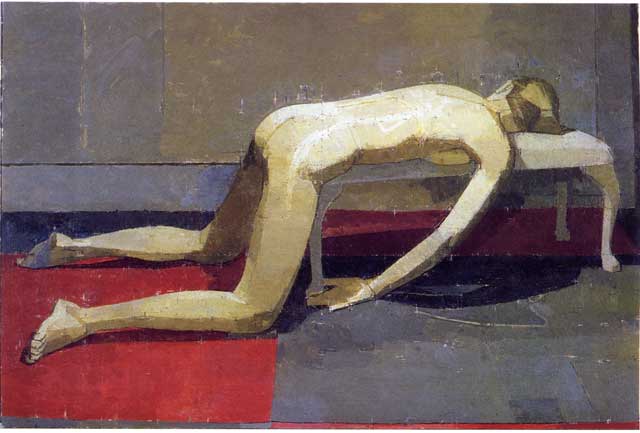
Nuria 1998 – 2000 Oil on Canvas laid on panel 14.25 x 21.25

Finished painting Skull 1994-7 Oil on canvas 12.75 x 25 in
As one might suspect with someone as structured as Uglow, he employed the Golden Section and other mathematical systems either as his canvas size or in his markings in the canvas. His drawing Study for Summer Picture shows his process of working out proportions.
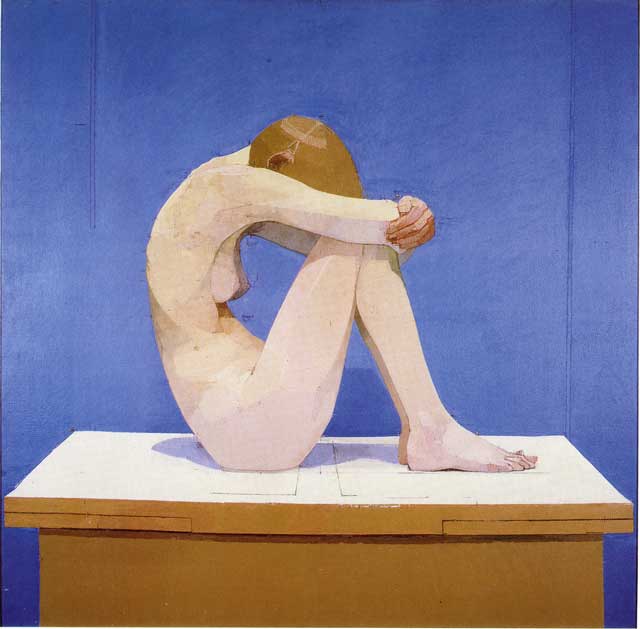
Finished painting Summer Picture 1971-2 oil on canvas 43 x 43.5 in
Poses
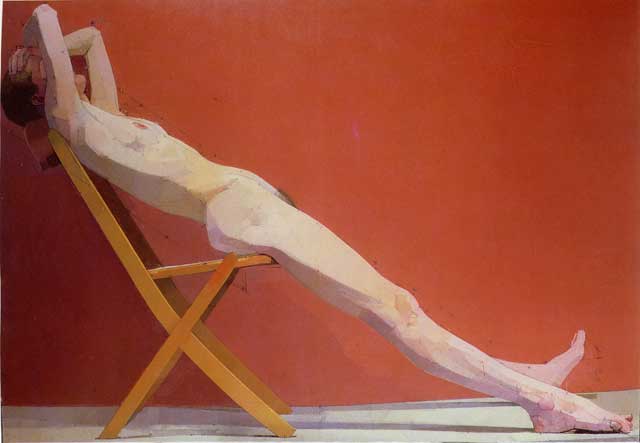
Finished painting The Diagonal 1971-1977 oil on canvas 46 x 65 in
There is solidity to Uglow’s poses that can be read as both strange and very interesting. He was notorious for these difficult poses and the long time it took to complete the paintings. His models would have to commit to years of posing for him (for models responses see the link below).
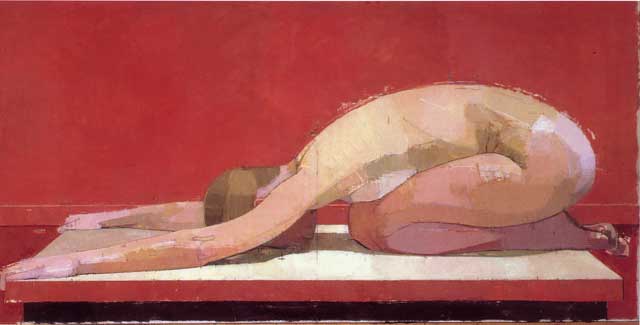
The Wave 1989-97 Oil on canvas 19.5 x 39.5 in
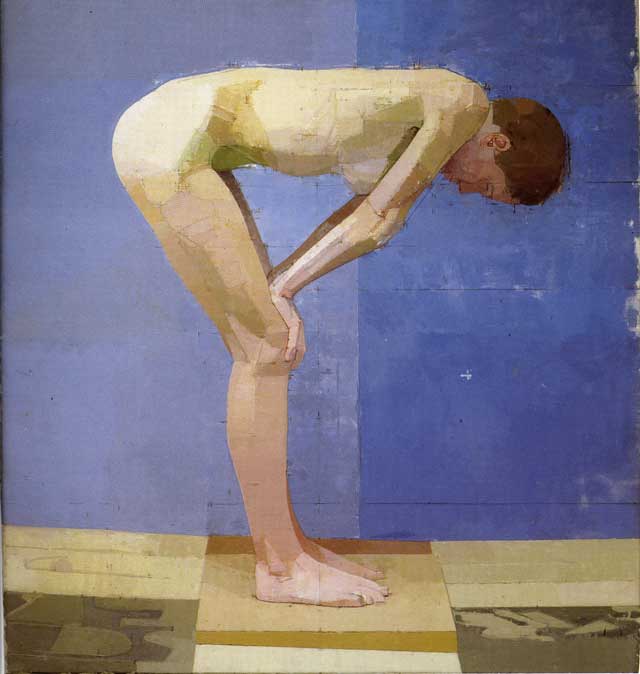
Ali 1995-1997 Oil on canvas 32 x 30 in
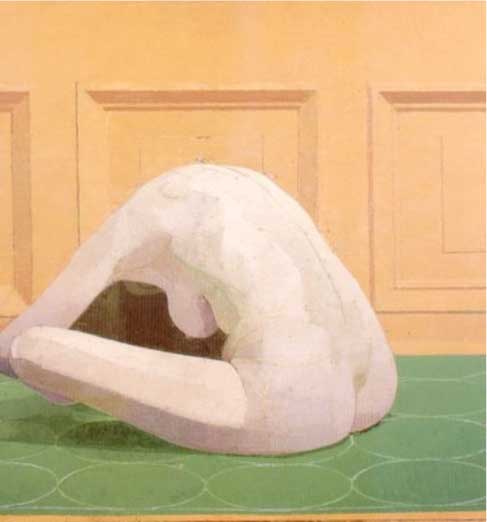
Pyramid 1994-1996
While I am painting,[my models] often go through a cycle of personal events. When one model first arrived, she had a boyfriend. Later she married, and by the time I was done, she was divorced.
–Euan Uglow

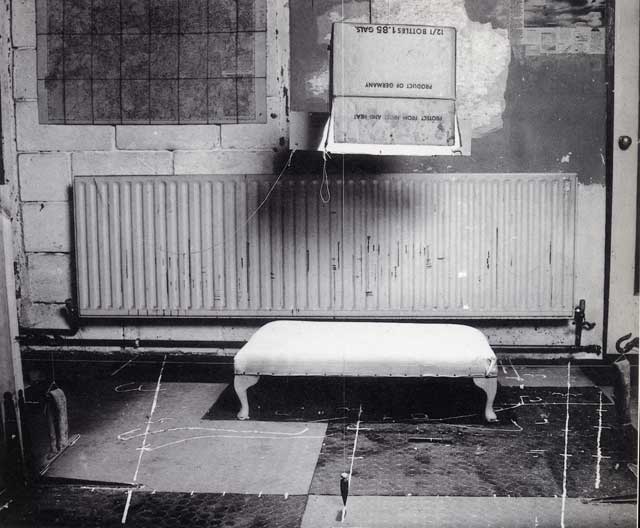
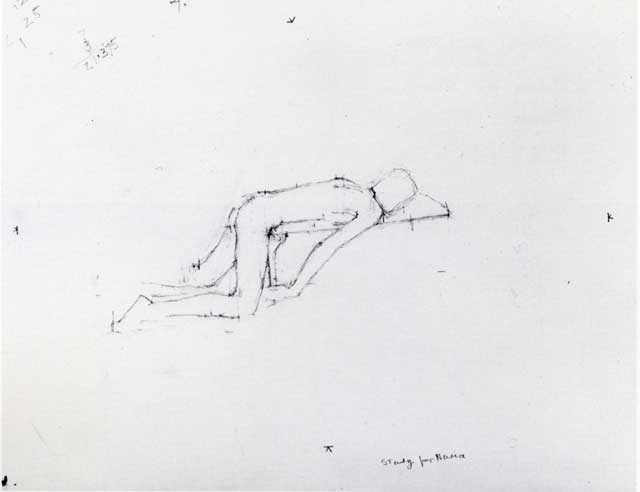
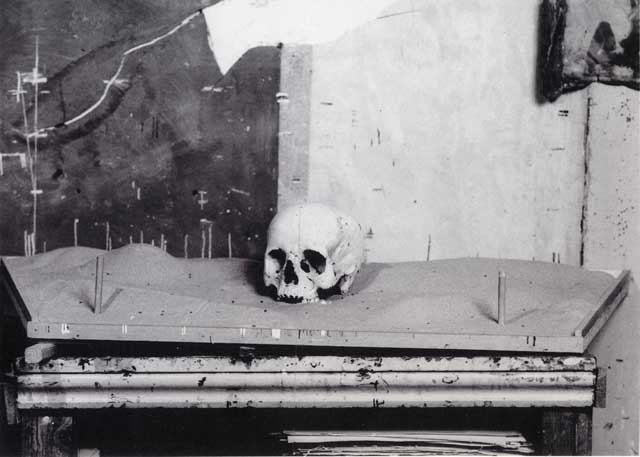
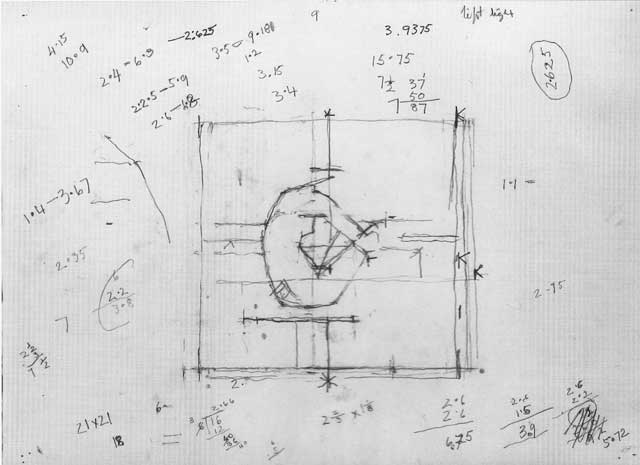




I’d like to thank Mr. Plotkin for posting these articles, I have a whole new appreciation for these brilliant painters. Does anyone have any insight into Uglows limited palette? Other than the blue-black, yellow ochre ad vermillion mentioned in this article. I’m wondering what sort of palette he uses for those daylight paintings.
It matches his limited talent
Glad to see the Uglow article up. His work is fascinating and although I’ve seen alot of his work in reproduction (the Lampert book is a must have), I’ve yet to see one in person. It seems like his surfaces and color in print don’t them justice, so I look forward to the day when I can see a large body of his paintings in an exhibition. Great job on the links too…there’s a lot of interesting stuff written on him. Seems like a very peculiar guy, but his paintings display a great clarity of vision and light, something that can only be achieved with his kind of obsessiveness and devotion to the craft. I would have to agree with the writer of the Guardian article, that his figure paintings display a disturbing vision of humanity (my words), an almost clinical, life-lessness. However, his portraits do display a certain humanity to them…seems like people just freaked him out maybe? Anyway, thanks again Larry and Neil for showcasing some wonderful paintings
I think Uglow is to figurative painting what Morandi is to Still Life. I don’t think the work is a disturbing view of humanity – I find all of it to contain a quiet certainty, while at the same time purveying a mysterious otherness -like a general blueprint for “Human-ness’ or Fruit-ness” etc. They are endlessly intriguing, as is the artist. Mathematical precision and Magic are here, hand in hand – who’s a thunk it possible!
That is a a really great analogy. I have been struggling to find ways to describe Uglow’s work, and thats great.
I second that. Great observation by Gabrielle.
I have to disagree. Mirandi is nothing like Uglow. Uglows simplicity in figurse(the poses) don’t mean lack of ideas comparing with Mirandis stubborn repeatednes on stiffly placed similar objects. Examining Mirandis approach one scene comes to mind from the movie ‘the shining’ when th wife is discovering her husband’s madness by looking at his books manuscript…. she looks at repeatedly written same santance in the script of her husband…im not saying its not catchy! but if I where to judge any of his paintings…they are lifeless, wobbly, proportionally incorrect – even if that was the goal as it seems..its too naive for how advanced the painting is to be convincing for my taste…the same is to do with color sophistication…they are all pale…just try to compare one of uglows still – lifes(and he did quite a few, probably more then Mkrandis figugures if any) to any Mirandis…they are all different yet as finished as a music piece is…every brush stoke and patch of color makes sense in the way how chords progression and such make sanse in a piece…
If I was to compere Mirandis art I would go with L.Fraud, as his paintings are also lacking color intricacy, compositions and figure poses are quite stiff and random…. there is nothing to contemplate but maybe the artist biography:).Sorry for my poor English.
Sorry for mistake it Morandi not Mirandi
I have to disagree. Morandi is nothing like Uglow. Uglows simplicity in figurse(the poses) don’t mean lack of ideas comparing with Morandis stubborn repeatednes on stiffly placed similar objects. If I was to judge any of his paintings…they are lifeless, wobbly, proportionally incorrect – even if that was the goal as it seems..it’s too naive for how advanced the painting is to be convincing for my taste…the same is to do with color sophistication. Morandi uses similar very poor color pallet, and also makes them all the same or very similar in most of his paintings compering with music its like playing all the songs in 3 chords with the key of C…when in Uglow’s paintings they are all different yet as finished as a music piece is but …every brush stoke and patch of color makes sense in the way how chords progression and such make sanse in a music piece…
If I was to compere and find similar artist to Morandi in figurative painters I would go with L.Fraud, as his paintings are also lacking color intricacy, compositions and figure poses are quite stiff and random…plus he uses the same ‘color key’ all over his career… there is nothing to contemplate but maybe the artist biography.
Thank you for that kinder remark than some here! I think that anyone who is a serious painter and has studied the work of Coldstream and Uglow will understand the paintings. The minute exploration of ‘planes’ is something we all learned from him and although most of us do not make them obvious, as he did, we all learned the careful and analytical aproach to subjects whether it is a grapefruit or a posing model. He is a great and interesting painter and thankfully this site gives him due justice.
Is it possible that I am the only person bothered by the perspective of the rear stool legs in the first painting shown? Given Uglow’s very careful measuring and observation this presentation seems odd — as though the position of the stool were changed midway trhough the painting’s progress. Rather uncharacteristic.
I particularly enjoyed the models reminiscing about posing for him.
Daniel, I do not think the position of the stool was changed in the process of the paining. It seems like a standard timber chair with the back sawn off. Specifically modified furniture as someone else has mentioned
I see your point, Russell. Stools have evenly spaced legs. Some chair have front legs spaced differently than the back legs, so this could be a chair with the back sawn off.
Hi, Uglow specially constructed the stool in”Curled nude on a Stool” specifically to prevent what he described as a”violent” linear perspective. This painting is in the Hull, I’ve seen it several times. It is great.
The “stool” referenced is just a typical chair with the back cut off and the model is sitting on it sideways. The back legs are narrower set than the front legs. The POV of the “stool” is the rear view. I too was confused the first time I looked at this painting and then I realized I had this very same chair in my dining room. Uglow is amazing in his discernment of minute color shifts. He’s definitely one of my favorite artists.
Don’t worry about the stool legs! It is very simple, This did not start life as a stool, but a chair. We all have them (stools made out of old chairs with the backs cut off!) as they are much more comfortable than stools, either for the models or for sitting at an easel. Thankd for noticing that detail..Euan’s work deserves that sort of intelligent ‘looking’!
uglow built his own prop furniture, sometimes to make an object seem like a more pure geometric shape in a certain perspective. I’m pretty sure that table in The Wave is actually scalloped on the side, so that it becomes a perfect rectangle from his vantage point (if not for that painting, then maybe another?) Kind of related: the photo above, “Setup for Nuria,” appears to mark the floor according to what he sees from his POV when painting. so, the funny stool is probably funny on purpose.
It took me a long time to warm to Uglow. My initial reaction was similar to one mentioned above–that there was something cold and inhuman in all that measuring and little notch marks. Eventually though. I came to appreciate the persistence and toughness of these pictures. Breaking the figure and interior into all those little moments seems an extension of what Cezanne did. Eventually, the oddness of the pictures attracted me more and more, because in the end, they are all about his own looking and less about any sort of objective reality. He doesn’t try to trick the eye the way a photo-realist might, instead he shows what it is to be in a room and to scrutinize all that one sees, taking careful, careful notes.
I’ve seen some of them in person and the impression they leave is one of an austere, hard-won elegance. For all the time he took to paint them, he somehow doesn’t make them overwrought or tired. The drawings are simpler but the use of the blank white page is (as someone above remarked) recalls Morandi a bit.
Interesting works. I’m curious about the Set up for Nuria. Are the hatch marks to the correlate to the same points on the canvas? It seems it plays with the perspective. A bit unnecessary for some one who clearly has a technical capacity to draw. Or perhaps it’s for the planning stages? Really glad to have encountered this site.
“•There is a video done of him painting Root Five Nude but unfortunately I have not been able to find any information about other than it was done in conjunction with a television show in the UK and have heard references to it.”
If you ever find this please email me, post here, whatever. I’d love to see it.
This is a great little condensed Uglow blogpost, well done!
Thanks so much for the post, very interesting stuff on an artist I love. I would also love to see this video! Please, if you find it post a link.
The Guardian obituary says, “Some of the inventiveness and strain of pulling off paintings in progress for several years with living subjects was shared in London Weekend Television’s South Bank Show documentary that traced the creation of Root Five Nude (1976).”
I was able to find this listing: http://explore.bfi.org.uk/4ce2b713428ba
but no footage.
It’s on You Tube now: https://www.youtube.com/watch?v=jqTTLQJ9ew8&t=534s
I must say the paintings made me very uncomfortable.
The scenes are disturbing.
All the admirers who wrote about the right angle and so on, did not even notice?
It is really a strange point of view.
Thank you for this post. I do not think that there is a late 20th or a 21st century figurative artist that is even comes close to Euan Uglow in importance. His draftsmanship is perfection without the tedious literalism of the photo-realists or the classic revivalists. His color is exquisite and has the sublime harmonies of Asian art. Uglow’s composition’s and figures are a deft combination of modernity and surprising originality. I know of no one better.
http://www.amazon.com/Euan-Uglow-The-Complete-Paintings/dp/0300123493
I bought this book- I believe it is his complete paintings. It is worth every cent for the insights and reproduction- plus great nuggets of real information about his process.
What impressed me- after the nudes were his clever stilllifes- I never like doing them but they gave a much needed jog to my imagination. I work from life so there is the inevitable down time when I can’t find a suitable model or the model is sick- or I am snowed in yada, yada.I noticed they were small, quirky, surprising and simple yet quite elegant. I am trying a small one for the first time- really- in my life- except for art school.
Sorry about this- did not see the link to the book. Mea Culpa.
This may interest readers of this blog, a talk by Martin Gayford on visiting Euan Uglow
http://www.bbc.co.uk/programmes/b03yqt36
Dennis,
How wonderful- I am a figurative artist and inspiration like this keeps me going. Thank-you so much.
I am entranced with his work.
Hello!
I was wondering if anyone knows where I can see Uglow’s work in England? I’m planning a trip to London and would love to see some of his paintings in person but can’t seem to find much info on where they are located.
Any help is much appreciated.
thanks!
Gus
The problem with EU is most of his paintings are in private collections, however his dealer was Browse And Darby in Cork Street London.They may have some of his work and if you contact them before your visit maybe you may be able to see what they have, it is worth a try.
The Arts Council Collection has about 8 paintings by Euan Uglow, I’m not sure if you can ask for them to be available when you visit their Longside gallery.
Can anyone identify what medium used for the ‘marks’ on the oil painting? The same is used for (some) outline of the subject. Thanks in advance
I was taught by euan uglow, I battled with him and ranted and raved , he had the ability to be always right which at 16 was unforgivable., But guess what I remember every word, he was right and in time I learnt that magic is possible.
On a good day it is like a currant fizzing between the head the arm and the idea. You are in a bubble of lines and light.
On a bad day reach out for the shapes between the thorns and draw, draw and draw again